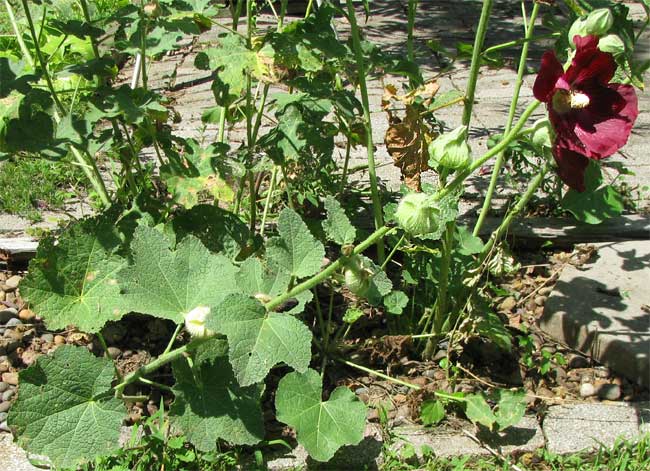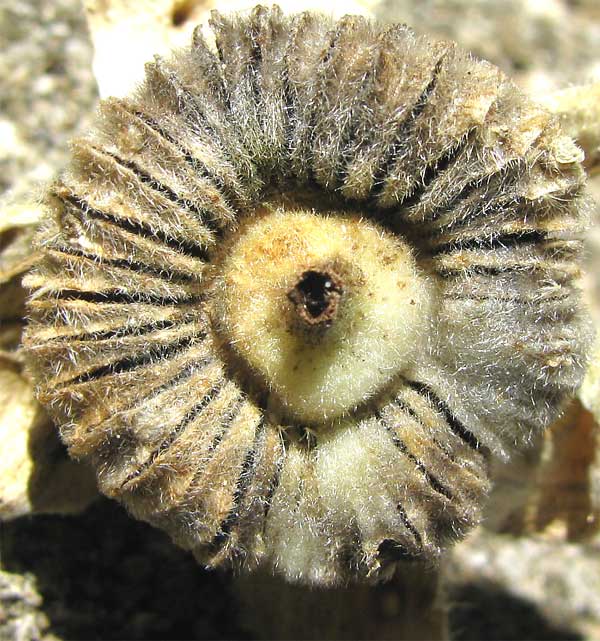Excerpts from Jim Conrad's
Naturalist Newsletter

from the the July 13, 2008 Newsletter, issued from Semiway, McLean County, Kentucky:
HOMEY HOLLYHOCKS
Unlike folks who, when you first see them after a long absence, start telling you the latest gossip or about their illnesses, when we reached my home area in western Kentucky at each house we were welcomed by aunts and cousins who said something like, "So good to see you, come look at my plants."
Probably because my Grandma Conrad was so fond of them, to me Hollyhocks always evoked "old homeplace feelings." Cousin Miles grew lots of Hollyhocks. If you need to be reminded of a Hollyhock's appearance, that's one above.
I've always known Hollyhocks as Althaea rosea, but Weakley's 2008 update of the Flora of the Carolinas refers to them as ALCEA ROSEA, so it looks like Alcea, an old Linnaeus name, has been resurrected for Hollyhocks. Hollyhocks, which are members of the Mallow or Hibiscus Family, are native to Eurasia, and from time to time escape and reproduce a few seasons in North America.
Now, what is the interesting object you can see at the bottom of this page?
The segmented ring is a series of Hollyhock "seeds" that became visible when I tore away the dry, brown, paperlike remains of the calyx, which after the flower had been pollinated and the corolla had fallen away had expanded to enclose the "seeds" like a brown paper bag. I put quotation marks around "seeds" because each unit in the ring is actually a dry, one-seeded fruit.
Whatever the segments are called, you can plant one and a Hollyhock will germinate from it.
